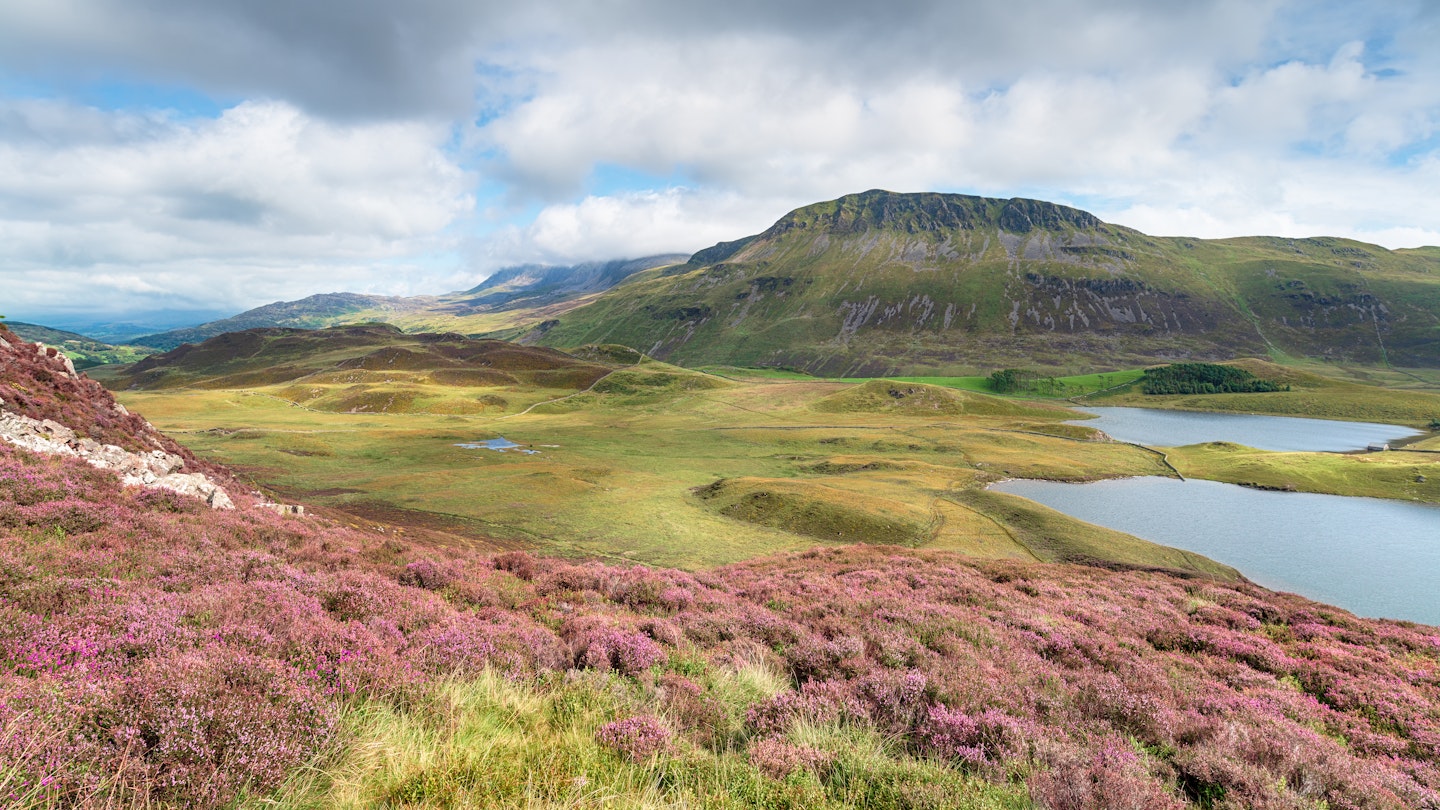
The UK is full of natural beauty spots with epic coastlines, hidden coves, misty mountains and everything a nature-lover could desire in between.
Here are ten of the UK’s best natural wonders to inspire your next adventure in the great outdoors. Always check the latest local restrictions before planning a trip and follow government health advice.
Cader Idris, Snowdonia
Wales is awash with wonderful scenery, but it’s hard to beat Snowdonia: a landscape of rocky mountain peaks, glacier-hewn valleys, sinuous ridges, sparkling lakes and rivers. Cader Idris mountain (893m) is named in honour of a giant called Idris, who allegedly created the rugged landscape during boulder-throwing duels with rivals.
Moreover, it is said to be the stomping ground of Gwyn ap Nudd, lord of the Celtic underworld, whose hounds signify doom. This area offers some of Wales’ most spectacular hiking; the various trails to the summit can easily be tackled in a day.
Jurassic Coast, Dorset
Towering rock stacks, sea-carved arches, and fossils abound along with some of the best beaches in the country. The Jurassic Coast, England’s first natural World Heritage Site, rivals the Great Barrier Reef and the Grand Canyon in its natural beauty. Key highlights include the famously photogenic Durdle Door, Lulworth Cove, and the Golden Cap.
Fingal’s Cave, Scotland
Accessible only by boat, this columnar sea cave on the island of Staffa inspired Mendelssohn’s Hebrides Overture after the composer heard waves echoing in this cathedral-like natural structure. The walls and surrounding cliffs are formed of vertical, hexagonal basalt columns that resemble pillars (Staffa is Norse for “pillar island”). Visitors can land on the island and walk into the cave via a causeway.

Scotland’s Northwest Highlands
The Highlands abound in breathtaking views, but the far northwest is particularly awe-inspiring. The coastal road between Durness and Kyle of Lochalsh offers jaw-dropping scenes at every turn: the rugged mountains of Assynt, the desolate beauty of Torridon, and the remote cliffs of Cape Wrath.
Dartmoor
Devon’s wild heart covers 368 sq miles, a vast national park that feels like something out of a Tolkien tome, characterized by honey-coloured heaths, moss-smothered boulders, tinkling streams, and eerie granite hills known as tors.
On sunny days, Dartmoor is idyllic: ponies wander freely and sheep graze alongside the road. However, when sleeting rain and swirling mists visit, you’ll understand why Dartmoor inspired Sir Arthur Conan Doyle’s The Hound of the Baskervilles: the moor transforms into a bleak wilderness where tales of a phantom hound can seem very real.

Seven Sister Chalk Cliffs, East Sussex
Dover’s iconic white cliffs garner the most attention; however, the colossal chalky walls of the Seven Sisters offer a more spectacular experience. This 4-mile stretch of sheer white rock rolls along the Sussex shore, overlooking the waters of the English Channel. It creates an impressive southern border to the South Downs National Park, notably dramatic at the towering headland of Beachy Head.
Lake District
William Wordsworth and his Romantic contemporaries first celebrated the charms of the Lake District, where it’s easy to see why they were captivated. Already recognized as the UK’s most popular national park, the Lake District became a UNESCO World Heritage Site in 2017, acknowledging its long history of hill farming. Consequently, many visitors return year after year to hike its hump-backed fells and bask in its stunning scenery.

Yorkshire Dales
The Yorkshire Dales – derived from the old Norse word dalr, meaning “valleys,” have been cherished as one of England’s premier hiking and cycling areas since they were protected as a national park in the 1950s. The park’s glacial valleys showcase a distinctive landscape of high heather moorland, stepped skylines, and flat-topped hills, complemented by charming country pubs and windswept trails. In the southern Dales, visitors can find England’s best examples of karst scenery, shaped by rainwater dissolving the underlying limestone bedrock.
Corryvreckan Whirlpool, Scotland
The Corryvreckan Whirlpool is among the world’s three most powerful tidal whirlpools, situated between Jura and Scarba. The Gaelic name translates to “cauldron of the speckled seas” and is said to be where the winter goddess Cailleach Bheur washes her clothes. This fascinating natural phenomenon can be viewed via a boat cruise or during a cliff hike when the tides are favorable.
Giant’s Causeway, Northern Ireland
This remarkable rock formation – Northern Ireland’s only UNESCO World Heritage site – stands as one of Ireland’s most impressive and atmospheric landscapes, featuring a vast expanse of regular, closely packed, hexagonal stone columns that appear to be the handiwork of giants.





